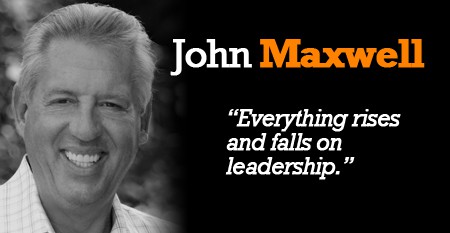When it comes to the business of business few decisions are as pivotal as those surrounding capital formation issues.
Understanding when to seek capital, where to look for funding, how to structure the deal and other such decisions are at a minimum complex, and if made incorrectly problematic if not disastrous. For those executives and entrepreneurs who deal with such issues, you’re in for a treat.
Today’s post contains an exclusive interview with Marty Secada, one of the leading minds in alternative corporate finance.
For those of you not already familiar with Marty Secada let me give you a brief overview of his background…Marty received his Bachelor’s degree from the University of Pennsylvania, a Masters in Science from Drexel University and his MBA in Finance from the Wharton School of Business. As the Managing Director of Broad and Wall Advisors Marty is an advisor to Hedge Funds, Private Equity Funds, and Merchant Banks where he evaluates hundreds of transactions every year. In addition to advising clients like Goldman Sachs, UBS, Deutsche Bank, and Chase, Marty also founded the Wharton Angel Group, revived the Wharton Investment Resource Exchange (WIRE), and founded the IvyPlus alternative investment network.
As a recent guest lecturer at Wharton, Marty was kind enough to refer to me as one of today’s top business advisors and while I appreciate the compliment I will gladly defer to Marty’s capital markets expertise. I hope that the following interview will shed light on the reason why I value Marty’s advice and counsel. On with the interview…
Mike Myatt: As the Managing Director at Broad and Wall Advisors, can you give our readers a brief overview of your company and the constituencies you serve?
Marty Secada: Broad and Wall Advisors is an advisory company to alternative investment firms. We assist private equity firms with deal origination, mergers, and acquisitions firms with deal fulfillment and hedge funds migrating to private equity with their strategy. We typically interact with fund managers who are looking for deals or strategy.I also run a network for alternative investors called IvyPlus. IvyPlus runs closed and sometimes open events for people in the alternative universe so they can socialize, share ideas and strategies. We’ve developed great feelings of fraternity in the group and are dedicated to positive networking and fantastic time management practices. We had more than 350 good referrals last year and probably already have around 100 for the first two months of the year. We seldom have meetings run over schedule and are remarkably efficient networkers. That’s important when you work long hours and want to get home to family life.
Mike Myatt: You have been involved in a number of high profile deals over the years. What was the toughest transaction you ever put together and why?
Marty Secada: There isn’t anyone toughest transaction, but the toughest transactions usually entail getting both sides to see each other’s intrinsic value. Early on I spent time trying to get sides that didn’t necessarily match to see each other’s intrinsic value. Because of trends in private equity finance and greater specialization, many aspects of early-stage finance have become more about knowing who is the right investor for you rather than trying to coax an investor who doesn’t invest in your sector to move out of his sweet spot. Though most investors are looking for good deals, deal flow is so strong at the early stages that if you have to educate the investor over too long a period of time, it is highly likely they will find a deal over that period that is more desirable and closer to their comfort zone. One well-known investor out of Silicon Valley who invested in Google early on told me that the best deals are always the easiest. That may be true as investors continue to have narrower focuses, however, terms for deals and syndication of deals continue to become more sophisticated. There are more players with more types of financing than ever before.
Mike Myatt: CEOs and entrepreneurs seeking financing often have a difficult time sorting out the differences between various investors as well as the types of financing and capital structures that are proposed. Can you give our readers a brief overview of the differences between VCs, private equity firms, hedge funds, merchant banks, and investment banks?
Marty Secada: Great question. People seeking funds need to educate themselves on the variety of potential investors out there and the trends with those investors. The groups you mention above can really be put in the alternative investment category which has had incredible growth over the last 10 years for many reasons. Source information varies but for global assets under management, there is somewhere between $1.5-4 trillion in hedge funds, $400-750 billion in private equity of which about 15% can be classified as Venture Capital (VC). There are also angel investors who as a group, invest about the same amount in total as VCs but spread over far more deals. These groups can be differentiated between those who invest in high growth, asset poor companies, and those who invest in asset-rich, lower growth companies, or public companies.
VCs typically invest in high growth companies and expect high returns. There is a known gap in early-stage investing that is widening for average investments made. Most of this can be found at the University of New Hampshire web site for angel investing or at the Angel Capital Association web site. The average VC investment these days is about $8 million. Less than 4,000 deals were done by VCs in 2006. The average VC invests in 4-6 deals annually, they see more than 2,000 a year. The average angel investor deal is about $450,000. About 44,000 Angel deals were done in 2006. Follow on rounds are included in these figures. If you are looking for investments between $800,000 and $5 million, it may be problematic to find funding sources. There is some conjecture on hedge fund migration or convergence to private equity but most hedge funds from my network don’t play in the VC space, though some hedge fund individuals may from time to time.
There are also family offices, foundations, and institutional investors. Investment banks may help later stage and some times early-stage companies find funding. Merchant banks have some elements of an investment bank but may also invest their own capital in deals. There are many creative ways to structure these deals and business owners need to educate themselves on the best fit for them and their business philosophy.
Mike Myatt: From your perspective what’s more material to a potential investment; the idea, the management, or the market?
Marty Secada: It depends. Most macro-economists would argue that market conditions influence the overall success more than anything else. Market size matters but without a strategy to dominate can be irrelevant. Ideas are more common than most entrepreneurs believe. I’ve had the same idea pitched to me by people from radically different backgrounds on the same day.
Most investors come back to assessing the management team as the key deciding factor. Management teams should have skin in the game, chemistry working together, and overwhelming trust with the investors and other key stakeholders. Lots of VCs talk about picking managers who refuse to lose, but that really translates into management that reacts well to market changes and is robust enough in their thinking to stick with a winning strategy and find a new one when the old one no longer works. I find some entrepreneurs exaggerate the role their advisors play with them and they should try not to overstate it. Great management teams know how to generate interest in their product without exaggeration.
Mike Myatt: Which sectors are receiving the most attention from investors right now and what sectors are falling out of favor?
Marty Secada: There is a strong political and economic push for alternative energies and a political push for ecology friendly energy strategies. China buys extended forward contracts on energy promising competitive consumption with the U.S. for years to come and consumers are concerned about the environment. Wellness is hot as our population ages and related biotech and MedTech are meaningful. Homeland security is an essential growth industry. In larger private equity deals, infrastructure projects in emerging and newly industrializing countries are pervasive as well as roll-up deals and mergers in those same areas. On a lesser note, I like online communities because of the immense value they add to members’ lives but think there may be a correction in valuations.
Several alternative energy strategies such as solar energy or corn-based ethanol may not be the most economically efficient and vulnerable to changes in political winds and valuations.
Out of favor sectors are shrink-wrapped software (vs. services) which is dead, wholly internet advertising-driven businesses and old media. I’m not too sure about the effectiveness of electronic grids delivering broadband as a meaningful strategy outside of the absolute value an electrical distribution network may have from locating sensors ubiquitously and the savings and efficiency delivered from that. But that has little to do with broadband and may actually be more of a clean energy play than broadband. It’s amazing that Microsoft still makes money from selling shrink-wrapped software like Office but they have a great brand and monopoly capability.
Mike Myatt: What do you feel is the most important element of a company’s core strategy?
Marty Secada: The core component I like to review once I make sure the financials sound right is how the company will come to dominate its market sector or market segment and then leverage that dominance to take over related segments. I like to hear numbers like months of competitive advantage and market share. That entails solid knowledge of distribution, channels, revenue, and branding. If you don’t have dominating market share, branding, and marketing power then you probably don’t have pricing power. Without pricing power, profitability may be questionable.
Finance is always important. I like to look at the components of expenditures as a way to do a reality check on the overall strategy. If it is a software or web platform, I start to question numbers if I see product expense spiraling past 20% or if the rollout period is too long. I want to see a management team that keeps its product development expense in check so it has money to market its product and create brand value. Likewise, I like to see the company have realistic quarterly milestones including product rollouts.
Mike Myatt: What’s the most common mistake you see entrepreneurs make when attempting to raise capital?
Marty Secada: Many entrepreneurs underestimate the value of professional management practices in their plan and presentation. Most of the questions in business at any stage are around who is going to do what next. Some think that because they have an idea, investors are beholden to them, but it actually is the other way around. A company puts together its list of milestones and timelines and the next question is who will accomplish these milestones? Many entrepreneurs walk in with ill-conceived org charts, no management practices, or an idea with a board of advisors and no management team. Well, how is that management team and organization going to change from year to year? Is management going to be able to take advantage of human resource arbitrage opportunities to keep expenses down? How does the management team make decisions and who do they look to for advice on making those decisions? Who from the existing management team is going to hire the required new staff? It all comes down to who is going to do what today and in the future. Otherwise, it’s just another piece of paper, not a business.
Early-stage investors do due diligence but most of them are really looking at the maturity of the management and how one builds a management model that grows from year to year and sustains the business through to success. There’s a project that Laura Romeo, a good friend of mine, runs called the Fortunate 400 project. She has letters that are hundreds of years old from some of the savviest businesspeople in American history mulling new ventures. One of the first things they would conceive back then was an org chart to say how the business, once up and running, would be managed. It was important then, it is important now.
Mike Myatt: Do you have a mentor and how valuable has that relationship been to you?
Marty Secada: I’ve had many mentoring style relationships that I’ve taken something away from though I wouldn’t say I had anyone relationship that led me to where I am today. Of course, I had a strong relationship with my father who was an immigrant and worked 3 jobs to make ends meet yet found time to attend school activities. Other than that, a professor named Myron Lieberman was a straight-shooting philosopher on life, Mike Singer, another Wharton grad was one of the first master networkers I met preceding the internet era. Vartan Gregorian and Sheldon Hackney were two great networkers I met at university who had huge, high quality, trusted networks. All these influences made me realize early on that great information can come from several sources and that one must continually grow and re-evaluate these sources. Nowadays I am as likely to seek advice from grizzled 30-year industry veterans as well as 22-year-old Canadian newsletter writers. I’ve found Darren Herman, an under 30 entrepreneur out of New York, to have great insight on what works and what doesn’t when it comes to internet marketing and generating traction in business. It all depends on the circumstance and question. I also like to read Mike Myatt’s blog!
Mike Myatt: If you could give one piece of advice to our readers what would that be?
Marty Secada: Continually add to your network and continually re-evaluate your network for its best elements and its elements that can be trusted. Staying in touch with and helping your network is essential to growing in business and in life.
Mike Myatt: What’s next for Marty Secada?
Marty Secada: I’m heading to the nexus of private equity convergence.
Mike Myatt: Is there anything else you’d like to share with our readers?
Marty Secada: Yes, keep a positive outlook. Long term positive outlook reflects the market, short-sellers i.e. negative types, seldom have great long term success. It is always important to remember that the overall value in markets is to move upwards even though commodities themselves may decline in value. Keep a positive outlook.







